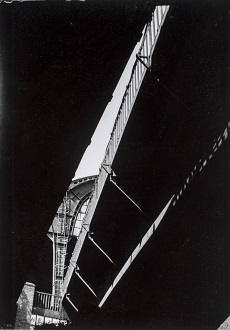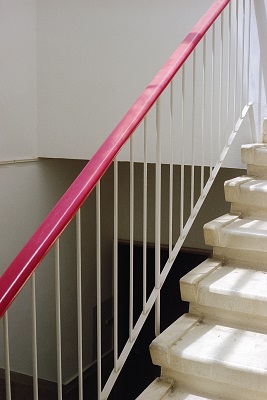100 Years – Erich Comeriner, Gil Marco Shani
Inga Gallery, 7 Bar Yochai St., Tel Aviv September–October 2025, Books by Asia publishing House (2025) | | |
The exhibition “100 Years” brings together Bauhaus photographer Erich Comeriner (1907–1978)—in what is believed to be his first-ever solo exhibition worldwide—and contemporary artist Gil Marco Shani. Comeriner studied under Bauhaus masters in Dessau even before the institution officially adopted photography as a field of study. He positioned himself at the forefront of modernist photography and exhibited in key exhibitions of the time, including Film und Foto (Stuttgart, 1929), alongside central figures of the time. He was part of the New Vision photography movement, which proposed a revolutionary perspective—deconstructing the objects’ conventional forms through various techniques, allowing for an expansion and sublimation of spatial perception, an understanding of a new spatial culture as stated by Moholy-Nagy (1936).
The exhibition primarily focuses on Comeriner’s work in Germany from 1929 to 1933, created through “New Eyes” (ibid.), and with a bold, experimental visual language. Comeriner photographed everyday objects previously absent from the photographic lexicon, human interactions, and architectural fragments in extreme close-ups or sharp angles. His work from this period captures fleeting moments of cultural flourishing.
Gil Marco Shani has, over the years, created objects that are deconstructed and reconstructed in a kind of recursive consciousness, gaining independent life. He empties them of their functional essence and presents them to the viewer as an autonomous, external façade. As a natural continuation, in recent years Marco Shani has explored processes of dismantling and construction through the photographic medium, creating new compositions that begin with the breakdown of visual language and evolve into new assemblies—architectural, human, personal. Among other themes, he tracks the swan song of architectural modernism in Tel Aviv, photographing the erasure of architectural history with an experimental visual language. Here, Shani points to an entire system of reflexive practices that tie together knowledge, power, and ideology, and to the social and cultural frameworks that shape destruction, forgetting, and erasure (Tagg, 1988).
The zeitgeist of the exhibition is both singular and cyclical, temporary and eternal; the historical and the contemporary both drifts, homeless; complex and rapidly disintegrating, and at the same time, dying. The work of modernist photographers of the 1930s was cut short by the rise of Nazism, when art was defined as degenerated; the hymn of modernism that enveloped Europe was interrupted. Comeriner, like his peers, emigrated from Germany, and his avant-garde work now encapsulates a pre-catastrophic existence. Like circular motion, and in around centennial year, life and art are once again under attack. Shani's work is created amid the horror, as the genetic code remembers. And as Man Ray put it, in the end, restlessness takes material form.
The exhibition is accompanied by two books: An artist’s book by Gil Marco Shani, “Three and a Half Years”; and a scholarly monograph, “Erich Comeriner: Bauhaus Photographer”, authored by Dr. Rona Sela. Both were published by Asia Publishing (2025).
| | |
| | | |  | | Erich Comeriner, High Speed Train Station, 1929 | | |  | | Gil Marco Shani, 36 Remez St., Tel Aviv (before demolition) | | |
|
|
| |
|
|
|